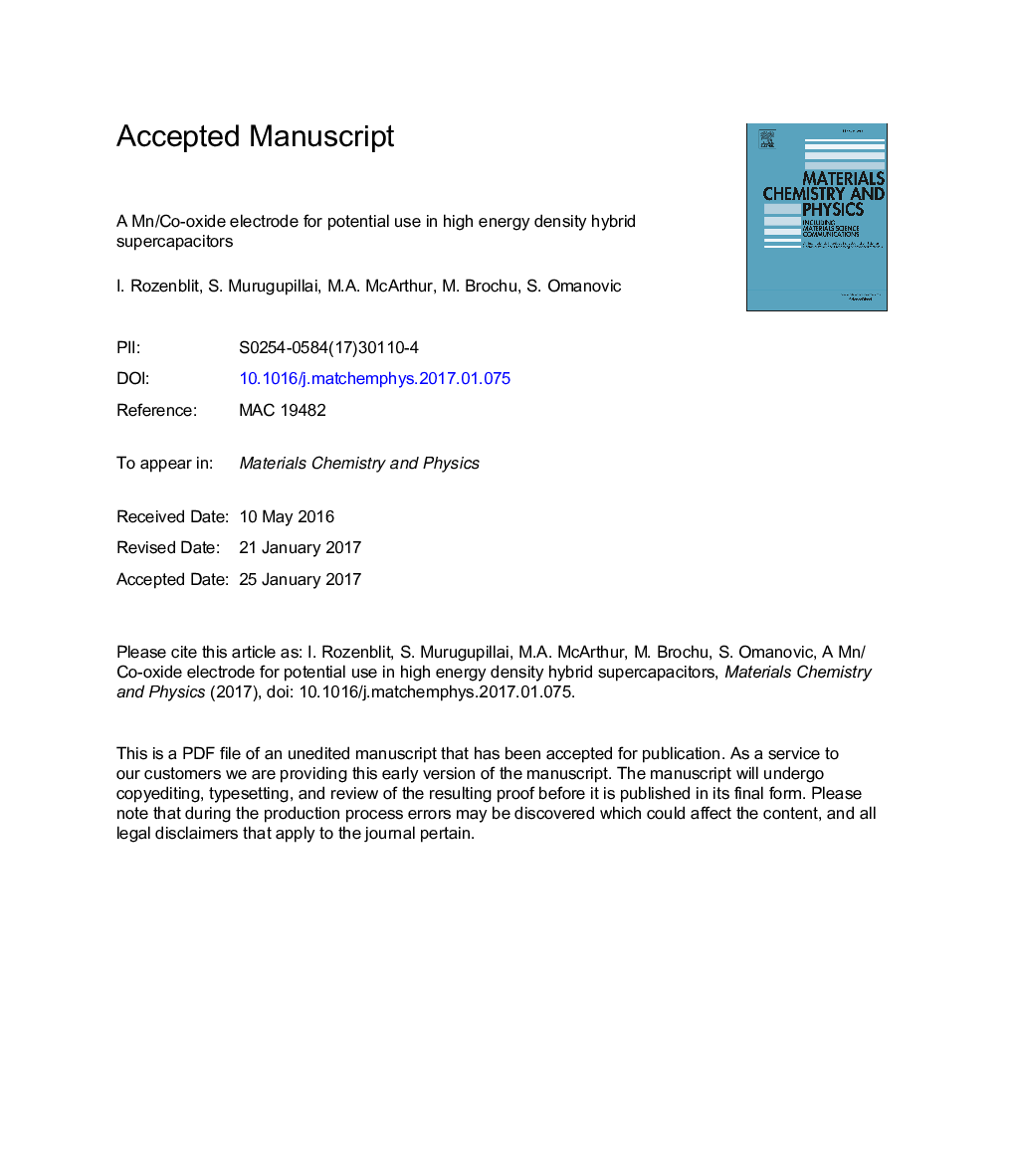| Article ID | Journal | Published Year | Pages | File Type |
|---|---|---|---|---|
| 5448062 | Materials Chemistry and Physics | 2017 | 32 Pages |
Abstract
A simple and inexpensive thermal pyrolysis method was used at the laboratory-scale to produce a high charge-storage Mn/Co-oxide electrode for hybrid supercapacitors. The material was investigated using galvanostatic charge-discharge (GCD), SEM, EDX, XPS and XRD. The Mn/Co-oxide exhibited a highly porous and intricate microstructure which allowed for high charge storage (capacitance). NaOH, LiOH, NaClO4 and LiClO4 electrolytes were employed and it was concluded that the pH, the type of anion and the size of cation played a large role in the resulting charge storage capability of the material. The highest capacitance of 4500 ± 60 mF cmâ2 (1.38 mAh cmâ2) was observed in 1.0 M LiOH at a current density of 0.4 mA cmâ2. The high apparent capacitance was due to intercalation of cations (Na+ or Li+) into the crystalline structure of the Mn0.5Co0.5-oxide phase, rendering the electrochemical behavior of the metal-oxide closer to that of Li-ion battery electrodes than to pure supercapacitors.
Related Topics
Physical Sciences and Engineering
Materials Science
Electronic, Optical and Magnetic Materials
Authors
I. Rozenblit, S. Murugupillai, M.A. McArthur, M. Brochu, S. Omanovic,
